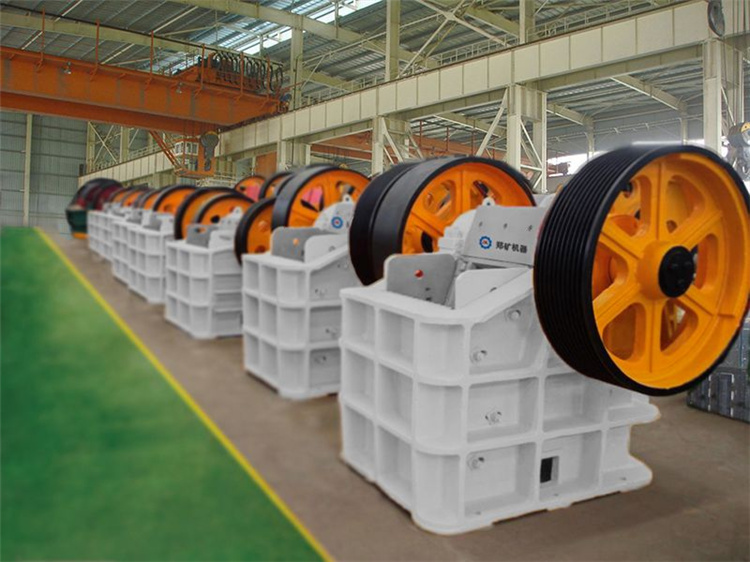Efficient jaw crushers are mainly used as coarse crushers and intermediate crushers in mining, building materials, infrastructure and other departments. According to the width of the feeding port, it can be divided into three types: large, medium, and small. Specifically, machines with a feed inlet width greater than 600 millimeters are considered large machines, those with a width between 300 and 600 millimeters are considered medium machines, and those with a width less than 300 millimeters are considered small machines.
About crushing principle of jaw crusher:
The main crushing principle of an efficient jaw crusher is based on compression and bending. During operation, the electric motor drives the belt and pulley, causing the eccentric shaft to rotate, thereby pushing the moving jaw (moving jaw) closer to the fixed jaw, causing the material entering the crushing chamber to be crushed by compression and bending. When the moving jaw leaves the fixed jaw, the crushed material is discharged from the discharge port under the action of gravity. Throughout the process, the crushing of materials is mainly achieved by the relative movement between the moving and fixed jaws, as well as the mutual squeezing and friction between the materials.
Efficient jaw crushers are widely used in rough and medium crushing operations in industries such as mining, building materials, and infrastructure due to their simple structure, convenient maintenance, and large processing capacity.
About production efficiency of jaw crusher:
The production efficiency of an efficient jaw crusher depends on various factors, including the size of the feeding port, the type and hardness of the material, the feeding method, and the specific model of the equipment. For example, different models of jaw crushers have different processing capacities. For example, the PE-150 × 250 model has a processing capacity of 1-3 tons/hour, while the PE-200 × 300 model has a processing capacity of 2-6 tons/hour
Efficient jaw crusher _ Baidu Baike
In addition, methods to improve production efficiency include selecting materials correctly, optimizing feeding methods, and ensuring sufficient mineral reserves.

How to select equipment?
1. Determine requirements: Clarify your production needs, including the required production capacity, raw material types, product specifications, work environment, etc.
2. Market research: Understand the types and models of equipment available in the market, as well as the product characteristics and performance of different suppliers.
3. Technical parameters: Compare the technical parameters of different equipment, such as production capacity, energy consumption, durability, maintenance requirements, etc.
4. Quality and reliability: Consider the quality and reliability of the equipment, including the manufacturer's reputation, user evaluation, after-sales service, etc.
5. Cost benefit analysis: Evaluate the purchase cost, operating cost, maintenance cost, and expected benefits of equipment.















